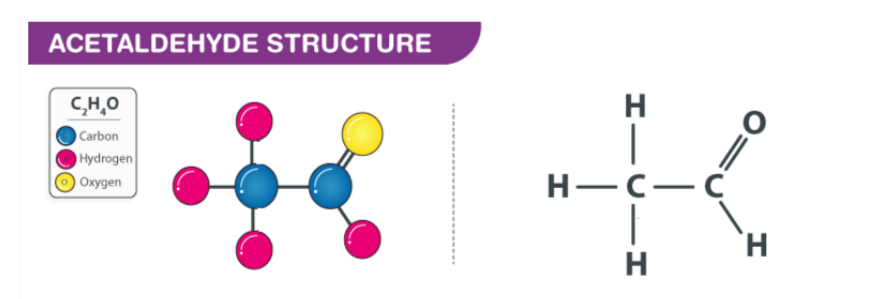
Ascorbic Acid chemical formula for vitamin C (ascorbic acid) is C6H8O6. Vitamin C (ascorbic acid) is an essential nutrient for animals and plants. Ascorbic acid denoted by C6H8O6, is a natural water-soluble vitamin with potent reducing and antioxidant properties.
It is a vitamin C that humans cannot produce and, therefore must be obtained through diet. Also known as Vitamin C or L-ascorbic acid is found in citrus fruits, strawberries, broccoli, raw bell peppers, kiwifruits and Brussels sprouts. Vitamin C is also found in leafy vegetables, potatoes, and tomatoes. It is used for treating and preventing the common cold. It is also applied to the skin to protect it against pollution and the sun.
It helps to fight off bacterial infections, detoxify reactions and aid in the formation of collagen in fibrous tissues, connective tissues, bones, capillaries and skin. This essential nutrient is mainly found in citrus fruits and vegetables but cannot be produced or stored by humans so needs to be consumed in the diet.
Also Read : Nucleophile FormulaAscorbic Acid Formula
It is found in several food items but is also taken as a supplement. It is also referred to as vitamin C or ascorbate. It is used in the prevention and treatment of scurvy. It is a vital nutrient involved in repairing tissues and the enzymatic production of neurotransmitters. In addition to its role as an antioxidant, it is essential for functioning several enzymes in the body.
Ascorbic Acid Structure
It is a six-carbon compound with a cyclic structure and various functional groups, including hydroxyl (OH) and carbonyl groups. The structural formula of ascorbic acid shows a six-membered carbon ring with alternating double bonds and hydroxyl groups attached to some of the carbon atoms within the ring.

Properties of Ascorbic Acid – C6H8O6
| C6H8O6 | Ascorbic Acid |
| Molecular Weight/ Molar Mass | 176.12 g/mol |
| Density | 1.694 g/cm3 |
| Boiling Point | 553 °C |
| Melting Point | 190 °C |
Chemical properties
Ascorbic acid is a vinylogous carboxylic acid that forms the ascorbate anion when one of the hydroxyls is deprotonated. This property is characteristic of reductones, which are enediols with a carbonyl group attached to the enediol group and thus having the form–C(OH)=C(OH)–C(=O)–. Ascorbate anion stability comes from electron delocalization due to resonance between two forms, making it much more acidic than isolated hydroxyl groups. Furthermore, salts of ascorbate form, including sodium ascorbate and calcium ascorbate, while it can also react with organic acids such as alcohols to form esters like ascorbyl palmitate and ascorbyl stearate.
Oxidation
The ascorbate ion is a predominant species at typical biological pH values. It is also a mild reducing agent and a mild antioxidant. A radical cation is formed when one electron is lost and a second electron is lost to form dehydroascorbic acid when the second electron is lost. Typically, it reacts with reactive oxygen species like hydroxyl radicals.
The resonance-stabilized nature of its own radical ion, semidehydroascorbate, makes it unique because it can transfer one electron. When exposed to oxygen, it undergoes further oxidative decomposition, resulting in a variety of acids, including diketogulonic acid, xylonic acid, oxalic acid, and threonic acid.
As a result of their interaction with nucleic acids, lipids, and proteins, reactive oxygen species can damage animals and plants on a molecular level. Further, these radicals can initiate chain reactions that ascorbate can terminate by electron transfer. In addition, its oxidized form is relatively unreactive and does not cause cell damage.
Uses of Ascorbic Acid
Ascorbic acid and its salt are used mainly as a food additive that protects from oxidation; with an E number of E300, this is officially approved in the USA, Australia and New Zealand. Additionally, it is offered as a dietary supplement and employed as a restrictor in photographic developer solutions and as a preservative. For other fluorescence techniques such as fluorescent microscopy, they make use of its anti-oxidant properties to amplify the fluorescent signal and reduce dye photobleaching.
We commonly use it to clean fiberglass swimming pools of metal stains, such as iron. Because it produces less waste than traditional synthesis methods, it makes molecular chains more quickly assembled in plastic manufacturing. In order to inject heroin into the bloodstream, heroin users use ascorbic acid to convert heroin base to water-soluble salts.
The effects of iodine tablets used for water purification can be counteracted with ascorbate. It can be beneficial in removing the taste, smell, and color from sterilized water, which is why many sporting goods stores sell it along with potassium iodide tablets as a portable aqua-neutralizing tablet. Ascorbate is also being researched by scientists as a potential chemotherapeutic and biological response modification agent; however, clinical trials are still ongoing.
Side Effects of Ascorbic Acid
As a water-soluble vitamin, excess ascorbic acid in the body is rapidly eliminated through urine. For individuals who take more than 2 to 3 grams of this vitamin on an empty stomach, indigestion may be experienced. Fortunately, taking sodium or calcium ascorbate forms of ascorbic acid may minimize this effect. Other symptoms such as nausea, diarrhoea and abdominal cramps reported for large doses are thought to be caused by the osmotic action of unabsorbed vitamin C passing through the intestine. Additionally, higher amounts may lead to excessive iron absorption in the body.
Ascorbic Acid Formula FAQs
What is ascorbic acid?
What are the dietary sources of ascorbic acid?
What is the role of ascorbic acid in the body?
Can a deficiency in ascorbic acid lead to health issues?
Is there a recommended daily intake of ascorbic acid?










